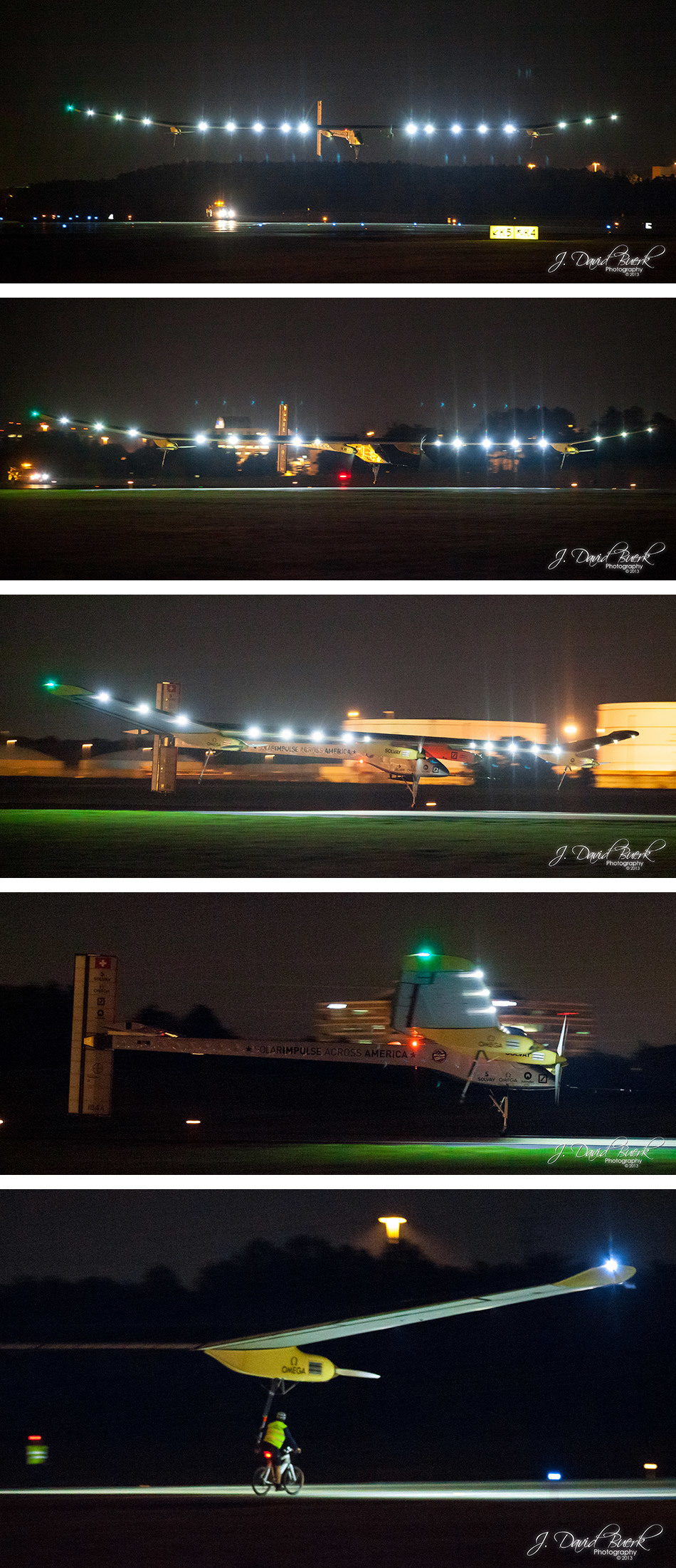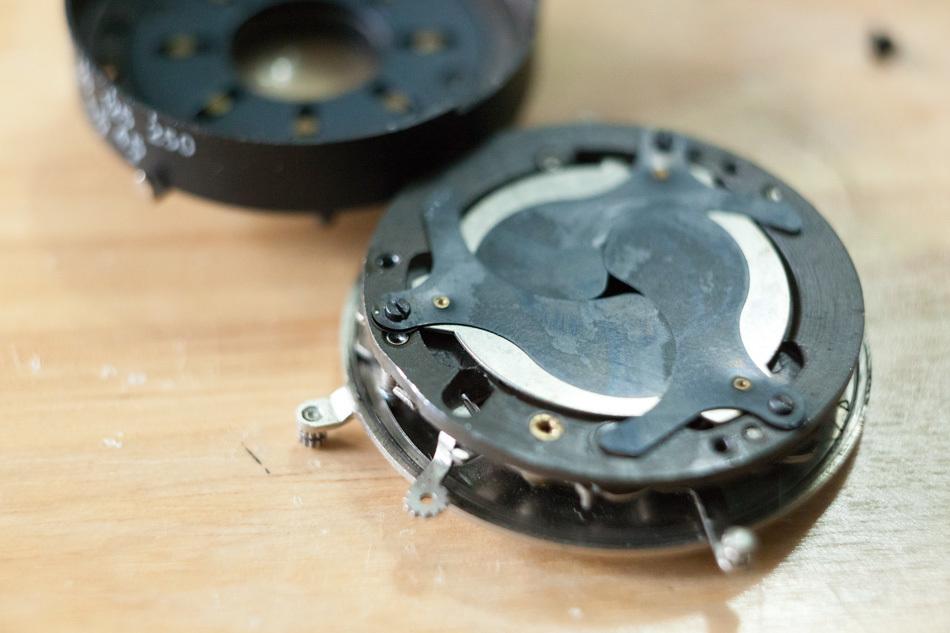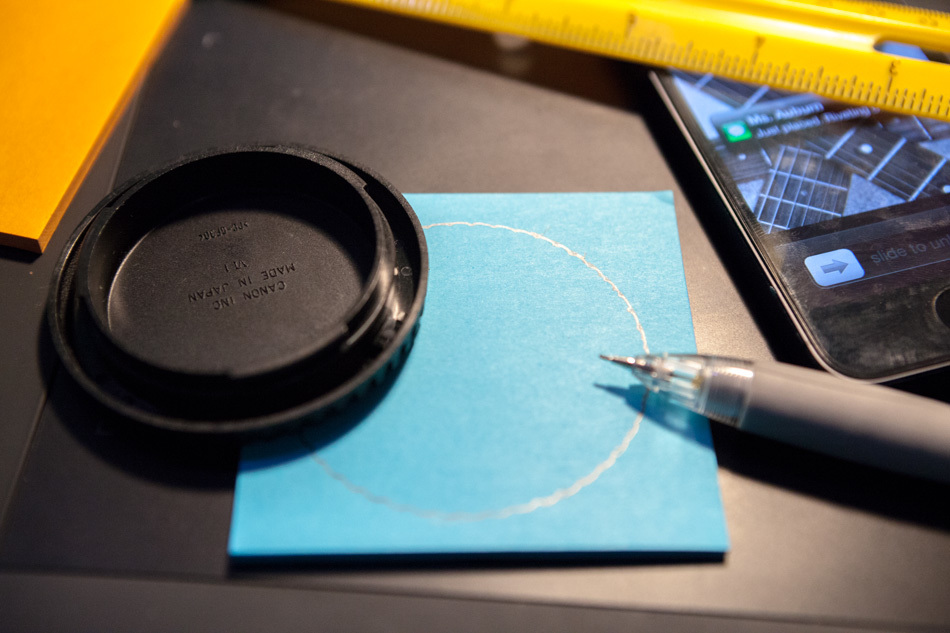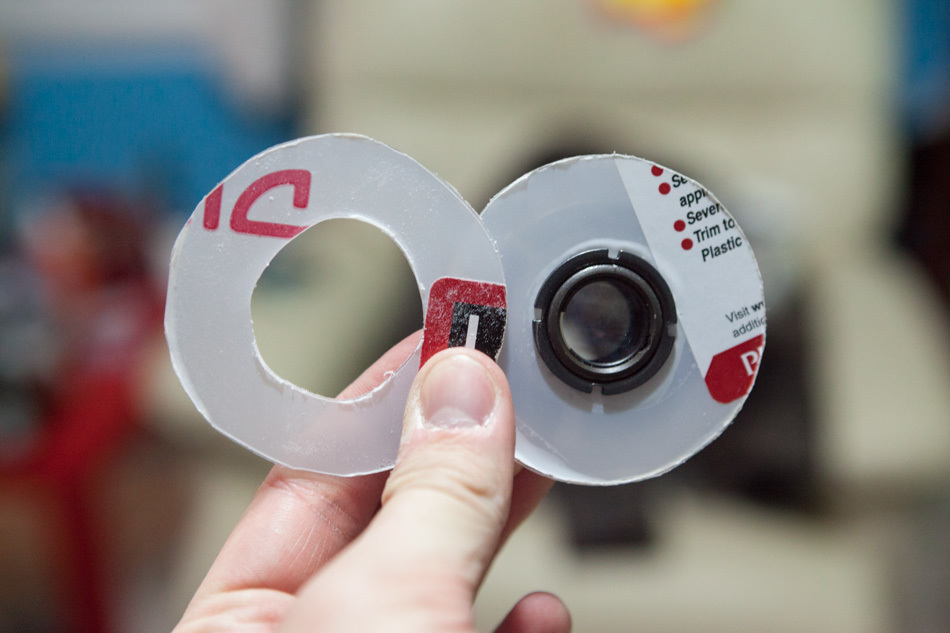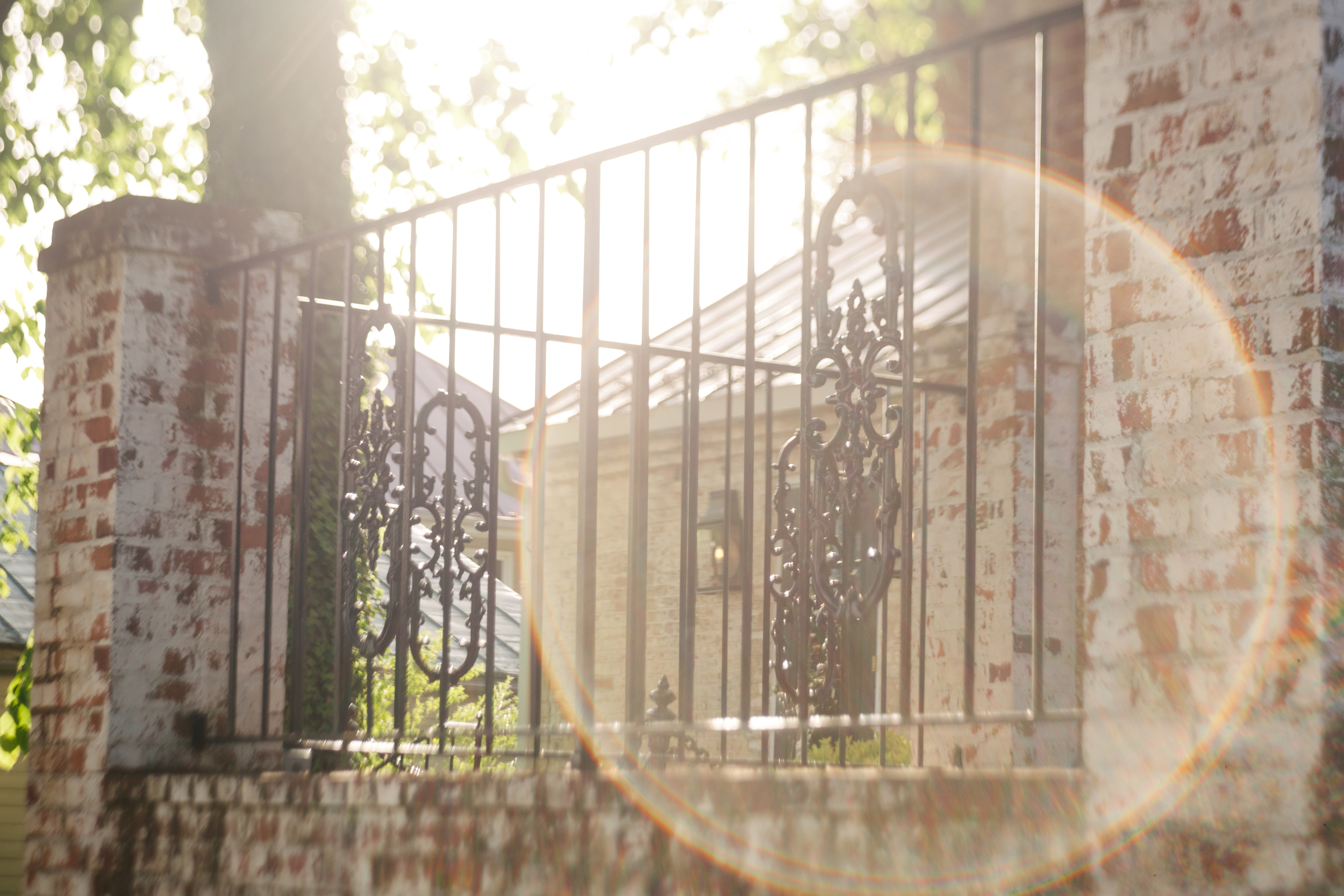After many weather delays, the Solar Impulse aircraft finally made its way to Washington Dulles International Airport, landing just before midnight on June 15th, 2013. It was the 2nd to final stop on its trip across the United States, before a planned 2-seater variant is to attempt a global circumnavigation in 2014. The experimental Swiss aircraft is entirely solar powered, weighting a mere ~3,500lbs (900lbs of which are batteries), has the wingspan of a 747 (almost 200 feet), and has only a single seat for the pilot. It is powered by four 10-horsepower electric motors, and has a cruise speed of just 37 knots (~43 MPH).
The Solar Impulse moves at extremely slow speeds; for this reason, the FAA only allows it to fly at night, when air traffic is at a minimum. Nighttime flight is possible with the 900lbs of Lithium-Ion batteries, built into the wings underneath the solar panels that charge them. From the ground, the Solar Impulse appears to be stationary in mid-air - the LED lights make it look like a UFO.
Media and special guests arrived at Dulles, and awaited the Solar Impulse on the runway. For most of those present, it was a reality check of how dark an airfield truly is at night, even with the airfield indicator lights. All of my photos were shot at ISO 6400 and above for this event.
All photos are available to view and purchase here.
















